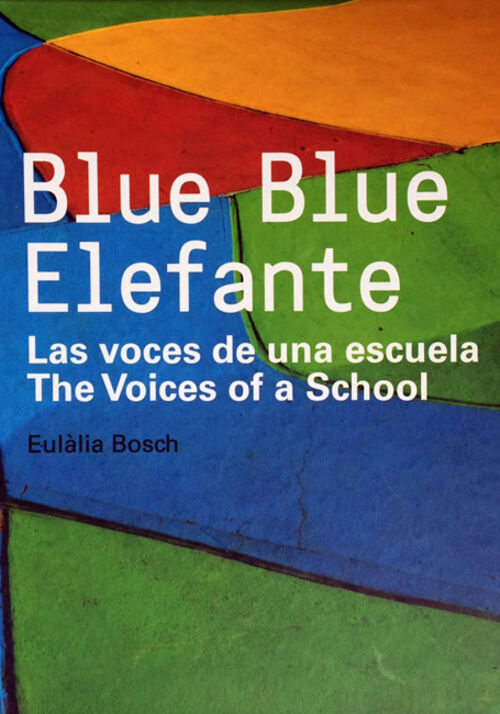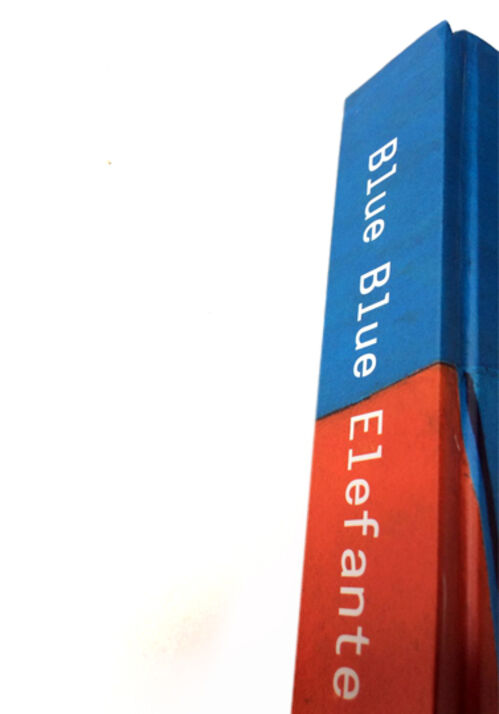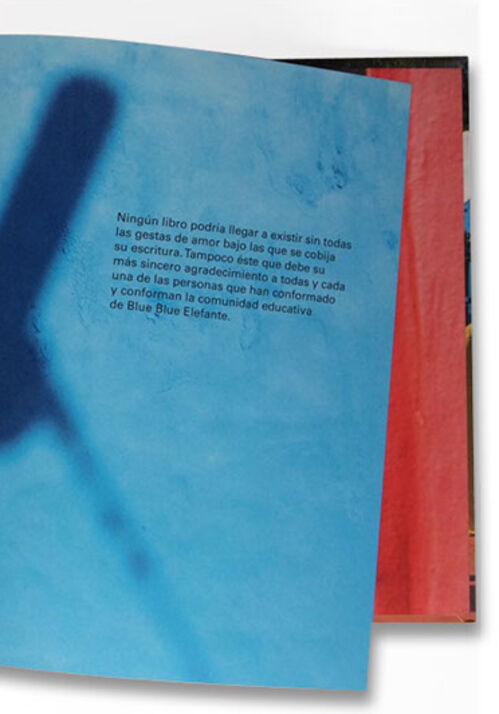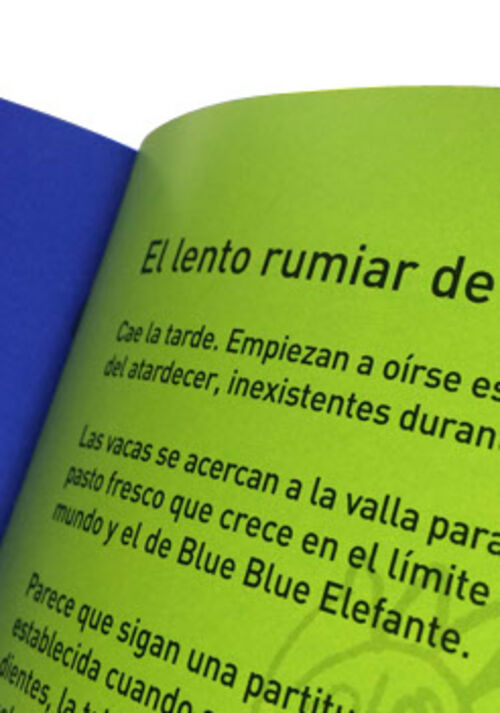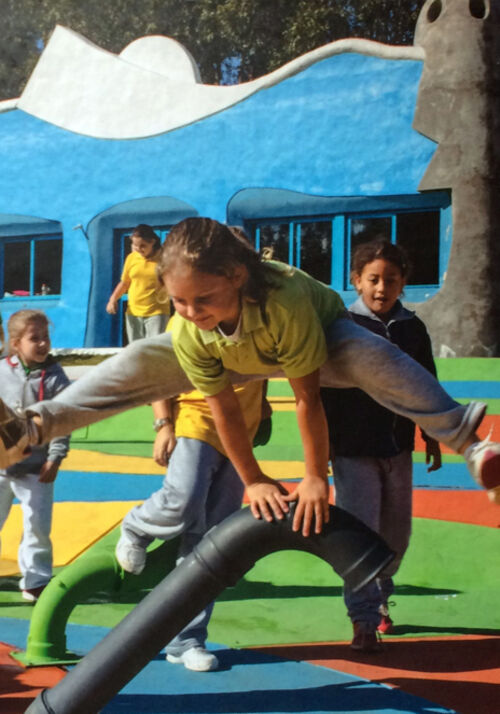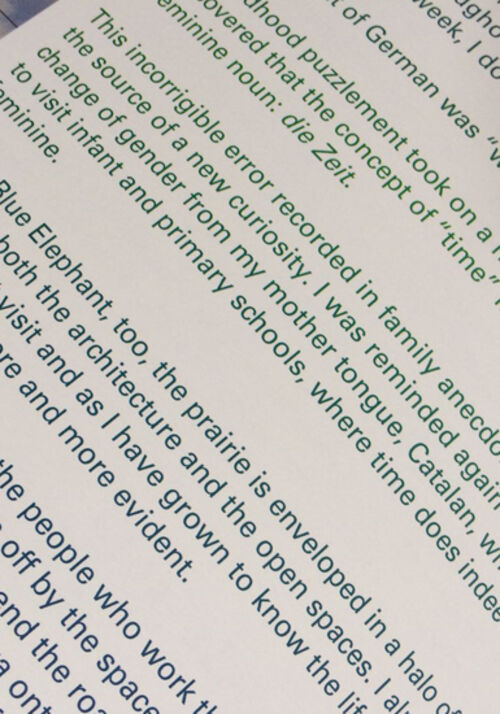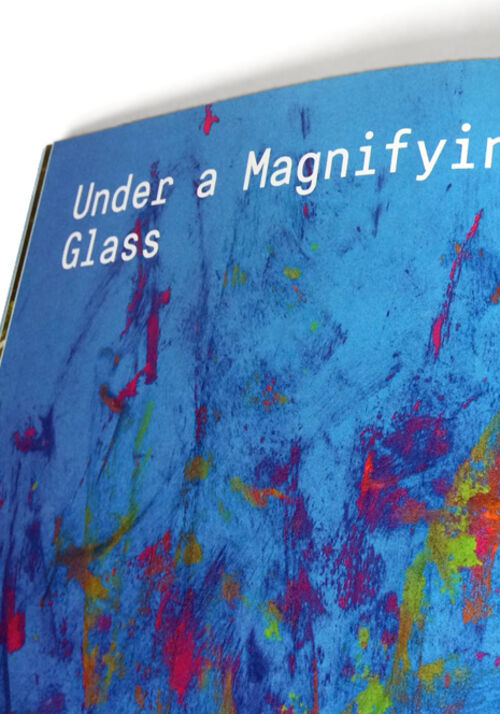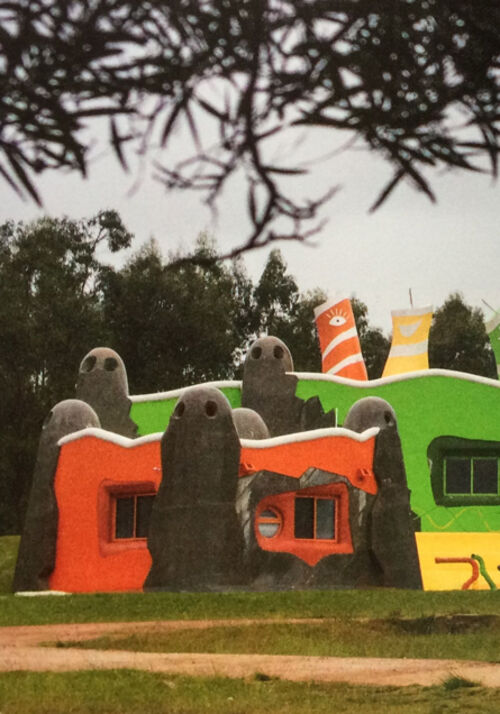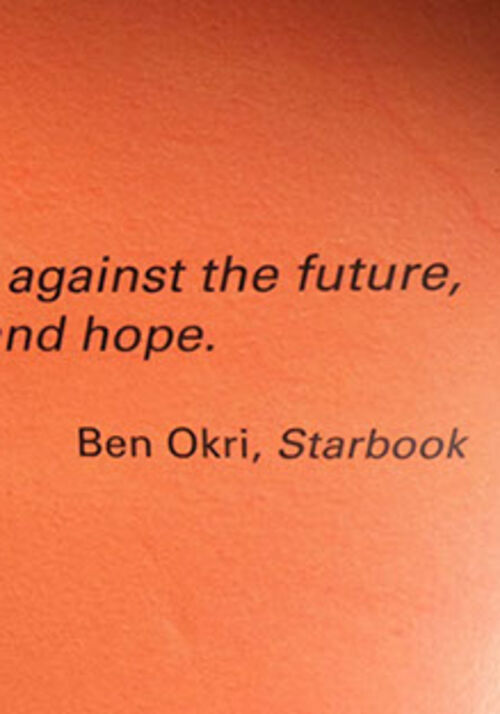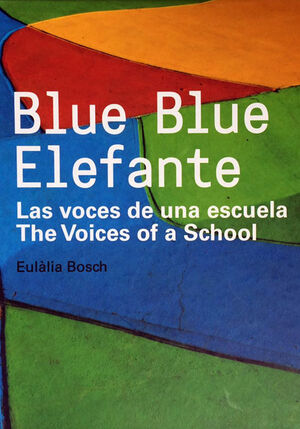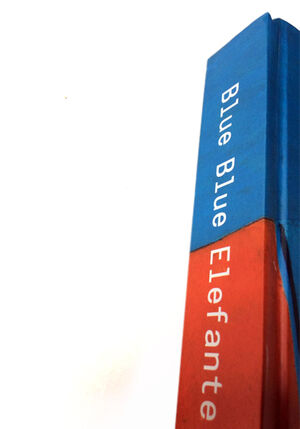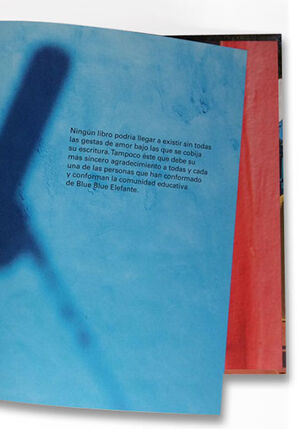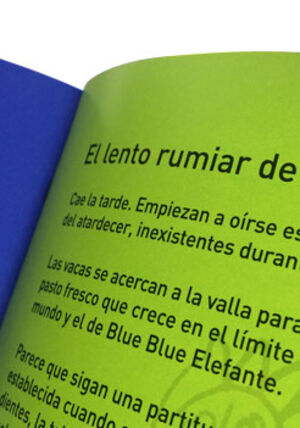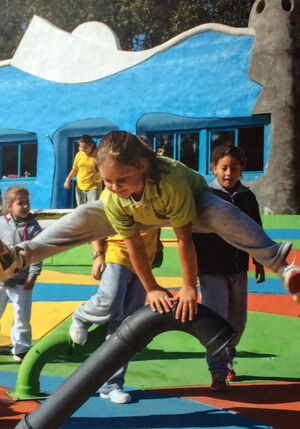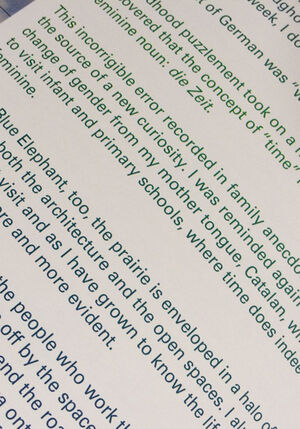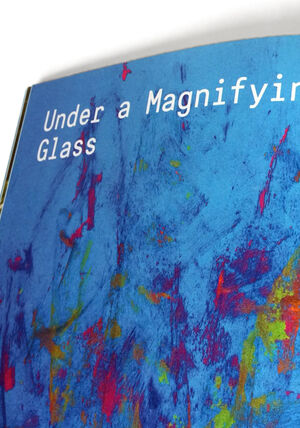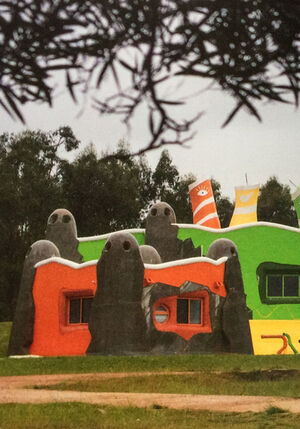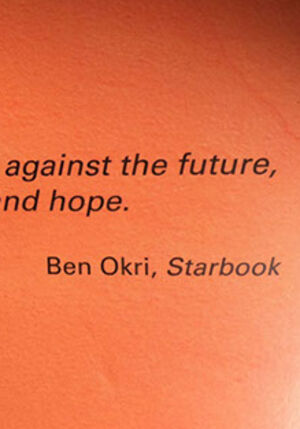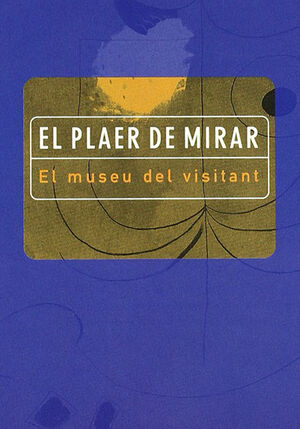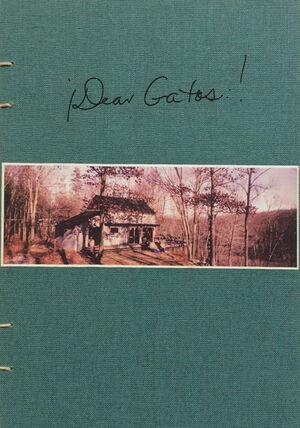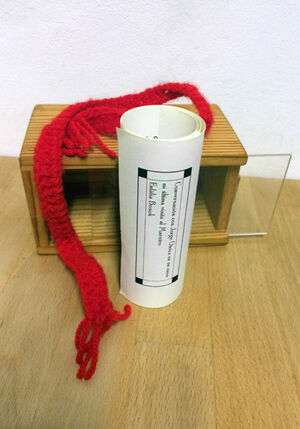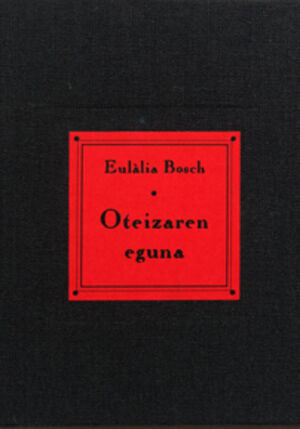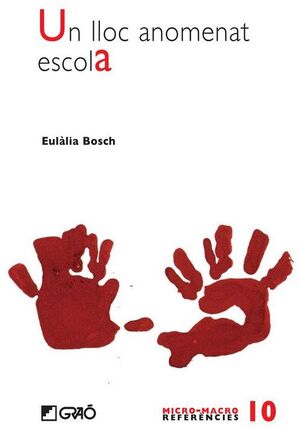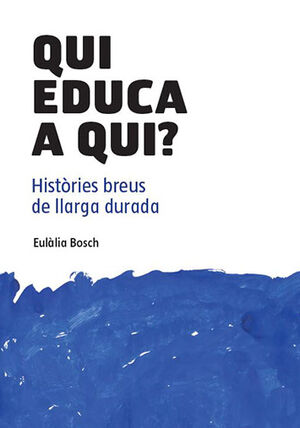Blue Blue Elefante
The voices of a School
Blue Blue Elephant tells the story of the life of a school from the point of view of a visitor captivated by the sheer scale of the project. The center is a vital focus for everyone who uses it and is intended as a place where learning comes as close as possible to happiness.
A strong wind was blowing over the Río de la Plata when I arrived in Montevideo. The waves blurred the flow of the water with the thick curtain of rain falling onto it. Passersby were struggling to keep their umbrellas at the best angle but the autumn did not seem to be having much trouble seeing off the summer. It was early April 2011.
I had travelled to Uruguay at the invitation of the UNESCO Chair of the University of Girona, to take part in a seminar organised jointly with the Latin American Centre for Human Economies.
It was at this event that Elizabeth Mazzuchi, a teacher and lecturer in Chemistry who I did not know personally, but with whom I had maintained a correspondence on educational issues for some time, suggested that I should visit a school that had just opened a few kilometres outside the city of Minas. The school's name - Blue Blue Elephant - and her description of it were so surprising that I decided to accept.
What I saw, and what I was told by the teachers, girls and boys I had lunch with, all seemed part of a dream. So much so that, when I returned that night to Montevideo, I felt as though I had been absorbed in a page from a novel by one of those great Latin American authors whose work is described so accurately by literary critics as "magical realism."
Back in Barcelona, I found it impossible to explain how, when and why this school had appeared just there. I did not, however, doubt its energy or the wellbeing it radiated. The sensation was very hard to define but easy to recognise, even months after the trip was over.
Whether through curiosity, or a desire to maintain my link with this new force in education, I kept in touch with the team running the school. Over the next two years we swapped texts, ideas and comments, recommended films and training programmes to each other, and I followed with interest certain aspects of Uruguayan affairs, as the country grew increasingly close to my heart.
In the course of these exchanges, the idea came up of collecting all my impressions, as an occasional visitor to Blue Blue Elephant, in a book. After so many years attempting to understand the nature of education, I relished the prospect of approaching this new project as though I were chronicling a journey to a territory at once familiar and still to be discovered.
I never had any intention of relating the history of the institution or justifying its educational project. Rather, I was attracted by the idea of making a book that would accompany the schoolchildren and their families during their time at the school and offer the teachers my observations on school life that, absorbed by it as they are on a daily basis, might pass unnoticed by its true protagonists.
I remember thinking clearly that it might turn out to be impossible to write a text to satisfy so many expectations all at once. But I have to admit that it was precisely this challenge that drew me to attempt it. I had to achieve enough complexity to allow for many different readings without needing to prioritise any one of them. I wanted every reader to be able to find his or her favourite page or chapter and for it to be an invitation to the pupils of the school to discover new possibilities as they grew.
I began by deciding that the book would have the tone, and even the form, of one of those notebooks that you grow so fond of during your travels, jotting down in them everything that, for whatever reason, takes you by surprise or is new to you.
I intended to write as a foreigner, so my first task was to observe. From the start, the school provided me with all the facilities necessary to attend classes, teachers' meetings, workshops with families and so on, and I had soon amassed a set of transcripts that allowed me to feel the pulse of the school. I selected a few and used them to create the chapter entitled "Growing Up at Blue Blue Elephant."
However, the life of the classrooms filled me with questions that could only be answered in direct conversations with the real authors of the project. I began by talking to Liz and Sylvia, together the original driving force behind it.
Liz told me how and why she had conceived the desire to create a school in honour of her mother's memory, that would offer an education laying the emphasis on freedom, the enrichment brought by the differences between people, and knowledge of and respect for nature. These, for her, were some of the elements necessary in the personal search for happiness, a presiding aim of this place from the start.
I went on to learn of her tenacity in finding the location and team to realise her dream of setting up a private initiative with a clear public vocation. I understood that it was this aim that had led her to endow the school with a broad programme of grants and to offer her help to the Uruguayan education system in the hope it would give its active backing to her project.
For her part, Sylvia Mazzuchi, the architect who gave shape and colour to Liz's wise intuitions, then took me through the intricades of the design and building of the school.
I asked Fernanda Ferreiro, the head mistress of the school, how she had created and organised the daily life of Blue Blue Elephant since it opened its doors in 2011, in keeping with the idea of building a place where learning would be part of the joy of being alive. I also inquired into the thinking underpinning the educational project drawn up by the teaching staff under the guidance of pedagogical coordinator Elizabeth Mazzuchi.
Later I compared my impressions with those of the primary and secondary school teachers and this was how the many conversations that allow readers to follow the progress of the project from the start found their way into the book.
To complement these, I included the first document in which the teachers pooled their ideas to set the work they had begun off to a good start. They gave it the title "Theoretical Basis."
Finally, I decided to take a look at the life of Blue Blue Elephant in the light of concepts that now, after over thirty years devoted to education, seem to me to lie at the very heart of it, to be its raison d'être. This led to the chapters on singular and plural, masculine and feminine, as well as reflections on the two different Spanish verbs for "to be."
As I wrote these chapters, without knowing exactly how or why, certain words I had used in the text seemed to me to glow brighter and began to generate leaves of a travel notebook when some moment in the day has struck you as special. This was how "The False Moon," "Cattle Slowly Chewing the Cud," "Reflection" and the rest came about. I gave them the collective title "Under a Magnifying Glass" and decided to include them as offerings to the girls and boys of the school in the same spirit as they gave me their drawings. Curiously, pictures and words have ended up sharing the same pages at the back of the book. The stories then found their voice, spoken by the actress Rebecca Simpson, and have slipped into the school website.
I obviously wanted to show clearly the harmony that Blue Blue Elephant has achieved between its buildings and nature. This aspect soon split in two: on one hand, the photography that would accompany the text; on the other, an audiovisual record of the school's vitality that often seemed to me to be just waiting to be filmed. So a video project was added to the written one, which I wanted to put into the hands of a team of young documentary makers so as to offer a different view of the school from my own. This was how María Alcázar, Neus Ballús and Paula Kleiman came to join the adventure. They succumbed to the charms of Blue Blue Elephant just as I had and soon began to suggest specific activities that would turn the filming into a Creative project together with teachers and pupils. Their videos were also put onto the school's website: www.bluebe.org
Adding this new documentary dimension made me think that the photography for the book could offer more abstract images. The school grounds were full of so many opportunities to capture delightful details that it was easy to imagine the children playing at identifying them, book in hand. Reading could be accompanied by careful study of the pictures.
I therefore invited John Christie to join the project. We had worked together before and I knew what a good film-maker and photographer he was, but I also chose him because he was the same age as me. I wanted to balance the images of the audiovisual team with photos that were closer in spirit to the journey I planned to make to this new kernel of education and I suspected that experience would be a great ally in this venture. I was keen to keep alive in the pages of the book the sensation of magical realism I had experienced on my first visit to Blue Blue Elephant. With John's involvement, the text became flooded with light and colour.
Finally, the team at Edicions de l'Eixample took on the challenge of turning this notebook into a unique volume containing a wide range of texts, voices in many different registers, children's drawings, photos both panoramic and close-up, and brief, separate stories...
It was also the design team who carne up with the blue border on every page. For me this evokes an imaginary line flying over the ocean and linking my desk in Barcelona with the Uruguayan prairie that once upon a time welcomed a little elephant as a mascot, nudging aside the cattle and horses to make room for a school that seeks to discover the extraordinary joy of learning every day.

